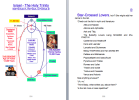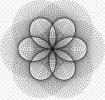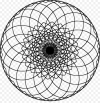Palinurus
The Living Force
pavlin_k said:That apparent contradiction might be solved with changing the frame of reference.
What if the explanation fits a 3 star system?
Hey pavlin_k,
I'm afraid your ingenious exegesis doesn't hold water as it is based on faulty assumptions -- which probably stems from your non-acquaintance with some of the basic materials.
There simply cannot be a three fold star system at play here -- if only for the following quotes from the same current session:
Q: (T) Okay, what is the twin sun theory?
A: Theory that the sun is really a double star.
Q: (L) Well, that is a damn good question! (T) What makes one atom helium and one atom oxygen? How do they know how to become what they are?
A: No.
Q: (T) Well, what determines the number?
A: Is it the composition of the nucleus?
Q: (L) Yeah. That's right. We forgot. What causes or determines the number of protons or whatever in the nucleus?
A: What composition would cause the orbiting of one electron?
Q: (L) One proton?
A: Now, think macro-dynamically.
Q: (L) Well, you once said that the sun is a window, or transition point to another density. Are you saying that the nucleus of an atom is also a window?
A: What we are saying is the sun is a proton and its twin is an electron!
But there is much, much more available to probably rank your exegesis among the realm of creative and inventive fantasies, and other confabulations. Like this for instance, a discussion about the discrepancy between 56% and 3.4%, or 0.56% even: Computational modelling of the companion star and its interaction with Sol notably Reply #7 - #13, but that whole topic is pertinent here.
Then we have:
pavlin_k said:http://cassiopaea.org/forum/index.php/topic said:July 4, 1998
A: Solar system, in concert with "mother star," is revolving around companion star, a "brown" star.
"The Mother star" ( partner ) and "The Little Brother" ( companion ), both of them "brown" stars.
You are reading this snippet completely out of context. Mother star is in quotes and here just means our own sun as being part of the solar system, i.e. planets plus sun/star. The whole system is revolving around the companion star which means they are moving 'in tandem' with one another which signifies two:
http://cassiopaea.org/forum/index.php/topic said:A: They are moving in tandem with one another along a flat, elliptical orbital plane. Outer reaches of solar system are breached by passage of brown companion, thus explaining anomalies recently discovered regarding outer planets and their moons.
More background and further context in this topic: Some transcripts about dark companion and comet cluster
And now about this other snippet you mentioned:
http://cassiopaea.org/forum/index.php/topic said:A: Other bodies not known to earth science.
More on what specifically that probably means, to be found in this topic: Another Hit ? - Solar System Structure
A general discussion about this whole matter can be found here: Incoming Second Sun?
Also relevant are (to name but a few):
NASA's WISE Survey Finds Thousands of New Stars, But No 'Planet X'
Another Hit for the Cassiopaeans? - Brown Dwarf Companion Star
Session 18 March 2000 with this remark therein that seems to give us some wriggling room for divers interpretations but NOT for a wild goose chase:
A: Our "companion star" data was meant as a clue for guidance purposes, not as the be all and end all.
Finally, when you do a forum wide search for companion star you will get 6 pages of results with 163 references in total.
So like I said, there really is much, much more available if you're genuinely interested, and I didn't even mention SotT.
Hope this helps a bit. :)








